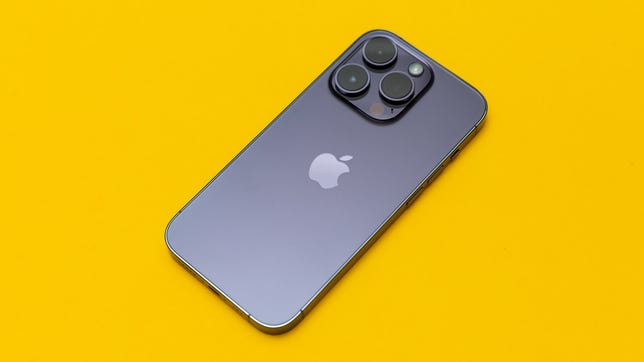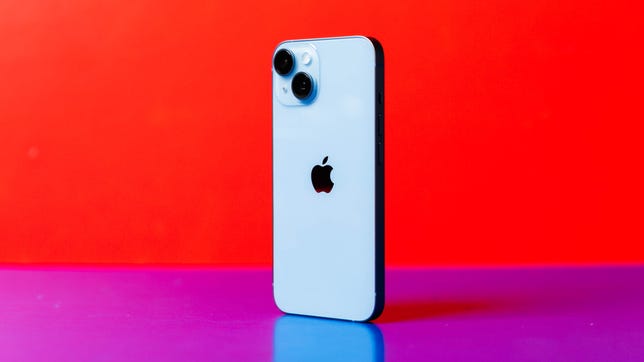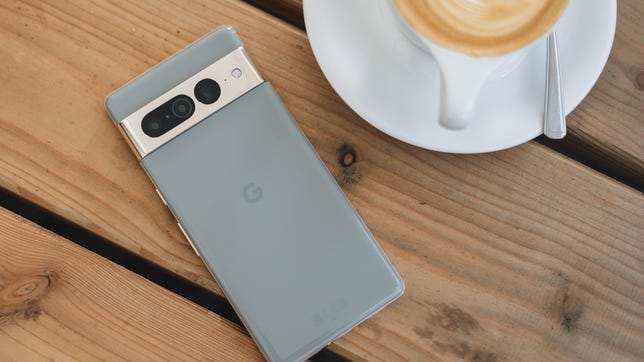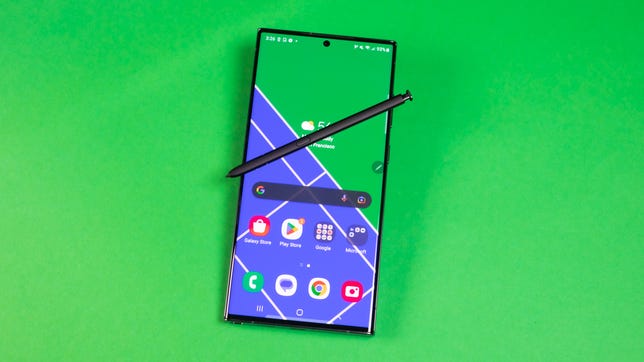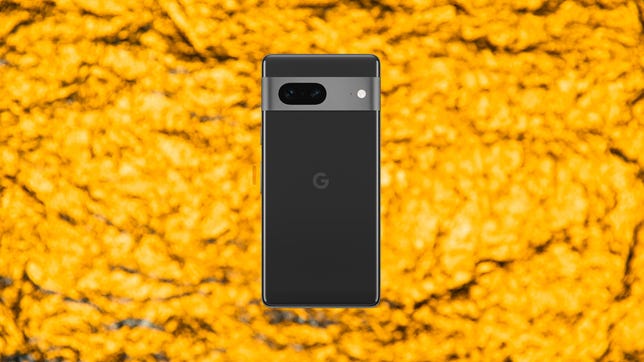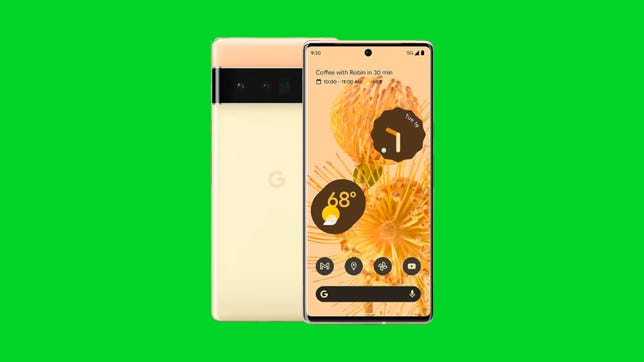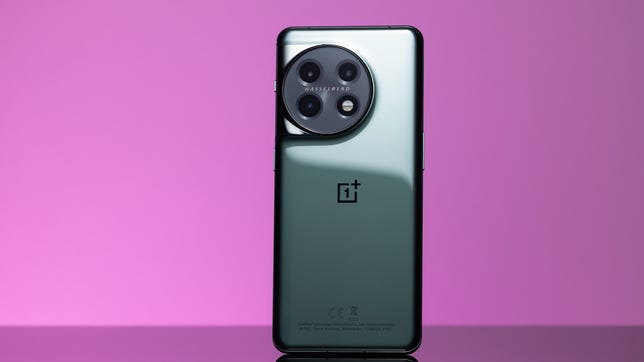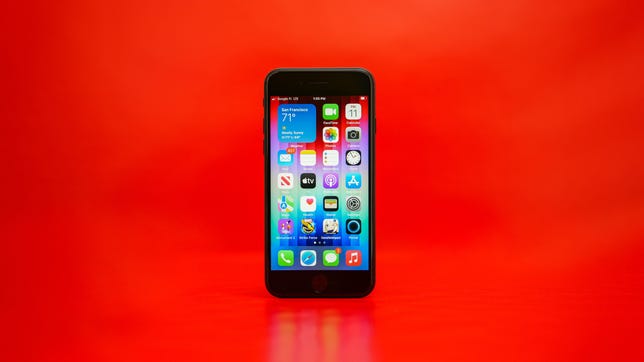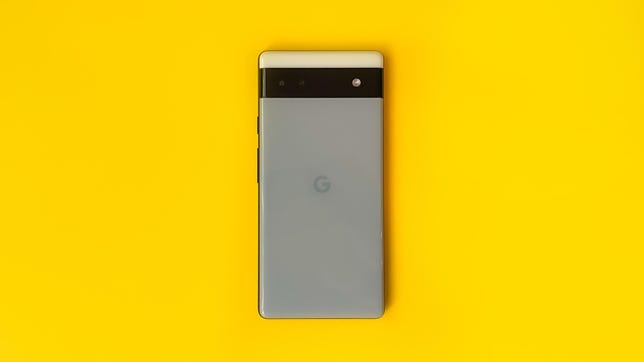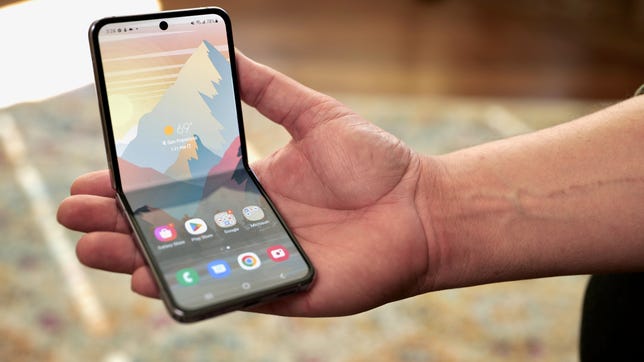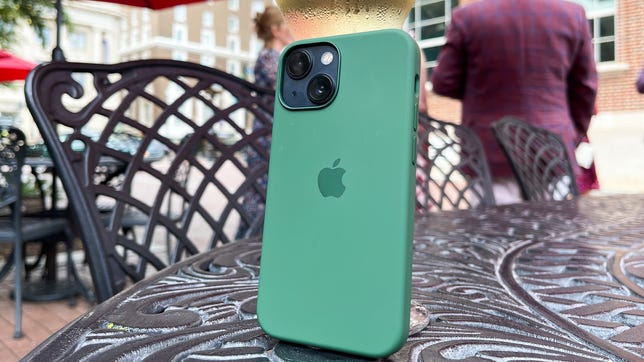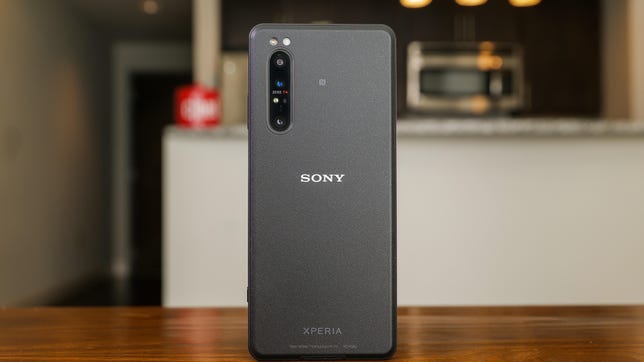Technologies
Whatever Your Budget, These Are the Best Phones of 2023
Our top phones for this year, hand-picked and thoroughly reviewed by CNET editors.

This story is part of Gift Guide, our year-round collection of the best gift ideas.
In this article:
The best phones of 2023 come in different sizes and at varying prices, but they have several things in common. From impressive cameras to fast processors and vibrant displays, each phone on this list meets the requirements for what CNET considers to be a quality smartphone.
But with so many options, deciding which one’s right for you isn’t always easy. To simplify the decision, we’ve rounded up our top picks. From flagship phones to budget phones under $500 and everything in between, there are plenty of worthwhile options.
Every phone on this list has been thoroughly reviewed and tested, and you’ll find options across iPhone and Android that fit different needs.
What is the best phone for most people?
The Apple iPhone 14 and 14 Pro impressed us with excellent performance from their processors and the cameras. But if you aren’t after the best iPhone around, you still have plenty of smartphone choices, including the Pixel 7 Pro and the Samsung Galaxy S23 Ultra. They both offer everything you could want, from high-end performance to superb cameras.
Those who want something cheaper should consider the $599 Pixel 7, while the Galaxy S23 may be more suitable for people who prefer smaller phones.
There are a number of other great smartphones with eye-catching features, such as Samsung’s new Galaxy Z Fold 4, which has a foldable screen. These can be quite expensive, but if your cash doesn’t stretch that far, worry not. More and more affordable phones, such as the new Pixel 6A, pack great specs, high-speed 5G connectivity and more-approachable prices.
Most of the phones below are available unlocked and should be compatible with the big four US wireless carriers, unless otherwise specified. Many of the best phones of 2022 remain available below, but we review and update this list regularly and will keep you posted as we test new models in the year ahead. For more info, read our guide to help find the best phone for your needs and take a look at our tips on how to buy a new Apple iPhone or Android phone and where to snag the best phone deals.
Best phones in 2023
Stephen Shankland/CNET
Apple’s iPhone 14 Pro and Pro Max introduce sweeping changes like the Dynamic Island, a new 48-megapixel camera system and Apple’s new A16 Bionic processor. All of these upgrades come together to make for an experience that feels fresh and fast. The upgrades to the main camera allow it to take some truly stunning photos, making the phone a solid option if you’re into mobile photography.
As Apple’s top phone it doesn’t come cheap — especially if you want the larger Max model — but if you’re looking for the best all-round performance in an iPhone, then the 14 Pro is the phone to get.
James Martin/CNET
While the base iPhone 14 doesn’t have the same triple camera array or new Dynamic Island notch as its pricier 14 Pro sibling, it still offers a lot to be excited about and comes with a more affordable price. CNET editor Patrick Holland describes it as «a good upgrade for most people» thanks to its solid performance, updated main camera and various other tweaks including a more repairable glass back in case it takes a tumble.
It’s not a huge overhaul from last year’s models, but if you’re in the market for a new iPhone and you don’t fancy spending the big bucks on the Pro series, then it’s a great option to consider.
With its stellar triple camera, refined design and spacious 6.7-inch screen, there’s a lot to love about the Pixel 7 Pro. Although it’s not very different from the previous Pixel 6 Pro, it will feel like a big change to those upgrading from a phone that’s more than two years old. Google has improved the zoom capabilities on the Pixel 7 Pro, giving it a 30x digital zoom compared to the 6 Pro’s 20x range for capturing tighter shots. Both the Pixel 7 and 7 Pro are getting some new features powered by Google’s Tensor G2 chip, such as the ability to sharpen old photos. You’ll also get free access to Google’s VPN on the Pixel 7 and 7 Pro.
At $899, the Pixel 7 Pro is cheaper than both the $1,000 Galaxy S23 Plus and $1,200 Galaxy S23 Ultra at their regular starting prices, making it a solid choice for those who want a giant screen and an excellent camera for less.
James Martin/CNET
The Galaxy S23 is a lot, but in a good way. It’s more than most people need in a phone, but that doesn’t make it any less impressive. Samsung made improvements to the camera’s resolution (200 megapixels compared to 108 megapixels), color tones and dynamic range, while retaining the same edgy design and massive 6.8-inch screen as its predecessor. There’s also a new Qualcomm Snapdragon 8 Gen 2 processor that’s been optimized specifically for Samsung’s phones, which brings faster performance compared to the Galaxy S22 Ultra.
Starting at $1,200, it may be an understatement to call this phone expensive. But those willing to pay more for a giant screen and a high-quality, versatile camera won’t be disappointed. Read our full review of the Galaxy S23 Ultra.
Samsung/CNET
Android fans looking for a petite phone don’t have much to choose from. But the 6.1-inch Galaxy S23 provides a compelling option for those who want a phone that feels compact but still provides enough screen space. The Galaxy S23 comes with routine upgrades like a fresh processor (a version of Qualcomm’s Snapdragon 8 Gen 2 that’s been optimized for Samsung’s phones), a slightly new design and a higher-resolution selfie camera. But it’s the Galaxy S23’s larger battery that makes it worth recommending. Read our full review of the Galaxy S23.
The Pixel 7 costs significantly less than the Galaxy S23 and iPhone 14, but nails the basics extremely well for a phone of its price. You’ll also get extra features that are specific to Google phones, like the ability to have the Google Assistant wait on hold for you.
The Pixel 7 isn’t very different from the Pixel 6, but it doesn’t need to be. Instead, it adds refinements like a closer digital camera zoom, a slightly upgraded design with a more prominent camera bar made of metal and face unlock. The new Tensor G2 processor also brings some new photography improvements, like Photo Unblur, which sharpens old photos.
Overall, the Pixel 7 is a great choice for those who want a new Android phone with a reasonably large screen at a price that’s more affordable than Samsung’s Galaxy S23 family.
Google no longer sells the Pixel 6 Pro through its website, but you can still find it through some third-party retailers at a significant discount for now. The Pixel 6 Pro’s unique design, great software additions, superb camera quality and solid all-around performance earned the phone an excellent rating when CNET reviewed it in 2021. It’s more than a year old, but many of our initial impressions still hold true. All told, it’s a worthwhile choice for those who want a spacious screen and a top-notch camera on a budget.
Patrick Holland/CNET
While Apple’s new iPhone 14 and 14 Pro might be the more exciting options with their upgraded cameras and the Pro’s new Dynamic Island notch, Apple is still selling the base iPhone 13.
The standard iPhone 13 is a reliable choice for most people, sporting a 6.1-inch screen and two excellent rear cameras. We loved the iPhone 13’s balance of power, camera performance and price and while it’s not a huge amount of money saved over the base iPhone 14, if you’re looking for a new handset and trying to keep your costs down it could be money well saved.
The $700 OnePlus 11 is a powerful phone that’s well equipped to handle gaming, video streaming and other common tasks. In typical OnePlus fashion, this phone is also cheaper than the $800 Galaxy S23 and $900 Pixel 7 Pro. The cameras aren’t the best, but they’re fine for casual photographers that just want to capture their next vacation or a night out. What sets the OnePlus 11 apart from many of its rivals is its blazing fast 100-watt fast charging, which can replenish the battery in just 25 minutes. (The US version only supports 80-watt charging, but that’s still an improvement over the Galaxy S23 Ultra’s 45-watt charging). Overall, the OnePlus 11 is ideal for those who want a powerful phone that charges quickly and won’t break the bank. Read our full review of the OnePlus 11.
Patrick Holland/CNET
Apple’s 2022 iPhone SE may not have the incredible multiple cameras of the top-end iPhone 13 Pro, but the iPhone SE has a lot to offer if you’re looking for a great experience without spending flagship levels of cash. It’s 5G-enabled, for one, it runs the latest iOS 15 software and it packs the same A15 Bionic processor found in Apple’s top phones. As a result, performance is lightning-fast.
Lisa Eadicicco/CNET
The Pixel 6A is Google’s newest midrange phone, replacing the Pixel 5A as the $449 device in its lineup. CNET’s Lisa Eadicicco called it the «best Android phone under $500» in her Pixel 6A review, noting that it keeps the same Tensor chip seen in the $599 Pixel 6 and many of its features.
The phone is slightly smaller than the Pixel 6, featuring an 6.1-inch OLED display and a refresh rate of 60Hz. And it has a similar camera to the Pixel 5A, including a 12.2-megapixel main camera and a 12-megapixel ultrawide camera. But by including the Tensor chip, photos can benefit from its Real Tone skin tone feature, Face Unblur, Night Sight for darker photography and the Magic Eraser for removing unwanted elements from a photo.
Patrick Holland/CNET
Samsung’s $1,000 Galaxy Z Flip 4 is the most portable and fun phone CNET’s Patrick Holland reviewed last year. It inherits the best parts of the Z Flip 3, like its pocketable flip phone-inspired design and Flex Mode, which makes it easier to use the phone when it’s propped open halfway. The Z Flip 4 also has a new image sensor, which improves image quality compared to the Flip 3, along with a bigger battery and newer processor.
These improvements address some of the Z Flip 3’s biggest shortcomings, even though Samsung didn’t give us everything we wanted (like a larger cover screen). But all told, the Galaxy Z Flip 4 is a great choice for those who want a phone that’s more portable than almost anything else you’ll find on the market.
You could also go for the Galaxy Z Flip 3, which Samsung still sells at a lower $900 price. But that’s still a lot to spend on a new phone, so I’d recommend spending a little extra now that the Galaxy Z Flip 3 is roughly a year and a half old. You might as well invest in newer technology that will last longer if possible, especially if you can score a good trade-in deal. Read our full review of the Galaxy Z Flip 4.
Patrick Holland/CNET
If you’re someone who prefers smaller, pocket-friendly devices, this is the phone for you. The 6.1-inch iPhone 13 Mini is easy to use with one hand and even fits into tight jean pockets. Starting at $699, this is the cheapest model in Apple’s iPhone 13 lineup. While battery life isn’t as long as on the iPhone 13, this petite Apple iPhone doesn’t sacrifice on camera capabilities or processing power.
Patrick Holland/CNET
At a whopping price of $2,500, the Sony Xperia Pro isn’t for everyone. But if you’re a photographer or videographer looking for professional-level camera phone features, you can’t go wrong. The Xperia Pro is essentially four products in one: a phone, a camera monitor, a speedy photo file transfer device, and a 5G machine suitable for broadcasting and livestreaming.
How we test phones
Every phone that appears on this list has been thoroughly tested by CNET’s expert reviews team. That means actually using the phone, testing the features, playing games on them and taking photos with them. No marketing promises are taken at face value, and if we find something we don’t like, be it battery life or build quality, we’ll tell you all about it.
Testing a phone means testing every element of the device. Is the display bright, sharp, vibrant? Does the design feel good to hold, is it heavy, does it feel well made and is it water resistant? We test the processor performance using both standardized benchmark tools like GeekBench and 3DMark, along with our own anecdotal observations while navigating the interface or when playing demanding games.
All the cameras (both front and back) are tested in a variety of conditions from bright sunlight through to dark scenes (for any available night modes), and we compare our findings against similarly priced models. We run battery tests, running them down from full to see how long they’re likely to keep going out there in the real world.
We take into account additional features like 5G, fingerprint or face scanners, styluses, fast charging, flexible displays or other extras that can be useful. And we of course balance all of this against the price to give you the verdict on whether that phone, whatever price it is, actually represents good value.
Phone FAQs
What makes a good phone camera?
All of today’s phones pack some kind of camera setup on the back, with most packing multiple ones offering things like ultra-wide views or telephoto zooms. Even a budget-focused phone should be able to take a well-exposed image in good light, using HDR techniques to balance bright skies and shadowy areas.
More expensive phones like the iPhone 14 Pro will use larger image sensors, better-quality lenses and image stabilization that let in more light, capturing highly detailed images with beautiful colors — in daylight and at night. Then there are phones like Samsung’s Galaxy S22 Ultra, which packs a huge 10x optical zoom lens that lets you zoom in close on far-away details without sacrificing image quality.
Typically, the more you pay, the better quality you’ll get, with the most advanced features being reserved for the most expensive flagships. But unless you’re a committed photographer, then most recent smartphones will be able to take good-enough shots of your kids at the beach to share with family and friends, so don’t think you need to spend a fortune to get a usable camera.
You can see our roundup of the best camera phones, with options at different prices, including budget phone cameras like the Google Pixel 6A.
What is the best phone case?
There’s a vast array of case options for almost every phone on the market, so which one is best really comes down to what you need it for. Many cases are simply there for the style. They might be made of luxury materials like leather or fabric, or simply come with some fancy design that you’ll enjoy having in your pocket all the time.
And while these cases will certainly help keep light scratches and scuffs off your phone, you should look toward more specialized rugged cases if you want to take your smartphone on a rough-and-tumble adventure into the outdoors.
We’ve got great roundups of excellent phone cases to buy, whether you need the best case for an iPhone 14 or a case for your new Galaxy S23.
How long should a phone battery last?
Battery life has always been a difficult topic in smartphones. As phones get more powerful they get more power-hungry, but keeping them slim enough to slide into a pocket means little room for a battery. Long gone are the days of getting a month out of a single charge.
Most of today’s smartphones — even those at the top end — should usually be able to deliver a full day of mixed use out of a charge. That means you should have a bit of juice left at the end of your day, but you should expect to give it a full charge when you plug it in next to your bed at night.
Mixed use is subjective, of course, but typically it would involve some general messaging and email, web browsing and listening to streaming music or podcasts for a couple of hours. Throw in some photos on your walk home from work, too. More demanding tasks like playing vibrant, 3D games like Asphalt 9: Legends will drain your battery much faster. If you plan on playing a lot of games, then make sure you’re within reach of a plug or carry a mobile battery pack with you.
How much storage should my phone have?
Phone storage has increased over time as our phones have to store much more data-heavy things these days. Apps and games use higher-resolution graphics or other modern features that mean they have to take up more room on your phone. It’s common for graphically intense games to take up several gigabytes of space, which is huge when you consider the first-generation iPhone came with a base 4GB of storage.
Most phones tend to come with a minimum of 128GB of storage, which is a good amount for apps, games and locally stored music. But it’s important to think about what you’ll be doing with your phone. If you want to download and play a lot of games, then consider opting for a higher-capacity version.
If you’re into photography and expect to take a lot of high-resolution photos, 4K video or DNG raw images, then again you’ll benefit from having more storage so you don’t have to keep deleting older files before you can take new ones. Having extra storage can be great peace of mind that you’ll be able to shoot away at your kid’s birthday party without worrying about missing that crucial moment because you ran out of space.
But you’ll pay more for that storage, with the iPhone 14 Pro’s top 1TB of space costing half as much again as the base 128GB model. Whether that’s a worthwhile investment is up to you.
What makes a phone a smartphone?
Pretty much every phone you can buy today is a smartphone. Smartphones let you do more than just make calls; they connect to the internet for web browsing, you can download apps and games, and they typically have cameras capable of taking — and displaying — photos and videos. In short, they’re just what we know of today as a «phone,» and everything on this list qualifies as a smartphone.
They’re worlds apart from the older-style «feature» phones like the original Nokia 3210, although even those have been updated with «smart» functions. And it is still possible to buy extremely basic feature phones, with physical buttons and no internet connectivity, although these are much more niche and far fewer companies still make them.
More phone buying guides
Technologies
Adorn Your Wrist With a 45mm Pixel Watch 3 for Just $200 This Black Friday
Both Amazon and Walmart are selling Google’s Pixel Watch 3 for just $200, but for how long?
There are tons of reasons to pick up a new smartwatch, not the least of which is monitoring your health and tracking your fitness goals. If you’re in the Android world, there are plenty of options to choose from right now. The Pixel Watch 3 is a solid choice, and it was our favorite Android smartwatch until the new Pixel Watch 4 took its place in the lineup. But the Watch 3 still boasts some great features that can help you stay on top of your wellness goals into the new year as well. And both Amazon and Walmart are running Black Friday deals that make it significantly cheaper than the Pixel Watch 4.
Both retailers are selling the bigger 45mm model with a solid $100 discount, so you can pick one up for just $200. That’s $100 less than the Pixel Watch 4’s Black Friday price. Again, this offer is available at both Walmart and Amazon, so take your pick as to where you place your order. Just do it soon because we don’t know how long these Black Friday deals will last.
The impressive watch was previously our top Android smartwatch because of its attractive design, large screen and speedy charging. It no longer requires a Fitbit Premium membership to access your readiness score, and it has plenty of great tools for runners. However, although the watch comes with Google Assistant, it doesn’t include Gemini, Google’s AI.
Lisa Eadicicco, a former senior editor, said in her CNET review, «The Pixel Watch 3’s upgrades are enough to keep it as my top pick for a general-purpose Android smartwatch. If you’re anything like me and consider yourself a casual runner in need of a general-purpose Android watch that’s sleek and comfortable, the Pixel Watch 3 won’t disappoint.»
If this isn’t the Pixel Watch for you, take a look at our full roundup on the best Pixel Watch deals going on right now.
SMARTWATCH DEALS OF THE WEEK
-
$339 (save $60)
-
$280 (save $70)
-
$300 (save $50)
-
$150 (save $100)
-
$49 (save $30)
Why this deal matters
Google Watches don’t go on sale often. These rare discounts on the Pixel Watch 3 are thanks to the release of the Pixel Watch 4 earlier this year. This deal drops the 45mm model to just $200 — a new all-time low, and a strong value for one of the most versatile Android smartwatches available.
Don’t miss any of our unbiased tech content and lab-based reviews. Add CNET as a preferred Google source.
Join Our Daily Deals Text Group!
Get hand-picked deals from CNET shopping experts straight to your phone.
By signing up, you confirm you are 16+ and agree to receive recurring marketing messages at the phone number provided. Consent is not a condition of purchase. Reply STOP to unsubscribe. Msg & data rates may apply. View our Privacy Policy and Terms of Use.
Technologies
I Regularly Buy Belkin Gear at Full Price, but You Can Save Up to 63% for Black Friday
Belkin makes excellent mobile accessories, from cables to wireless charging stands. Snag some of our favorites for less this Black Friday.
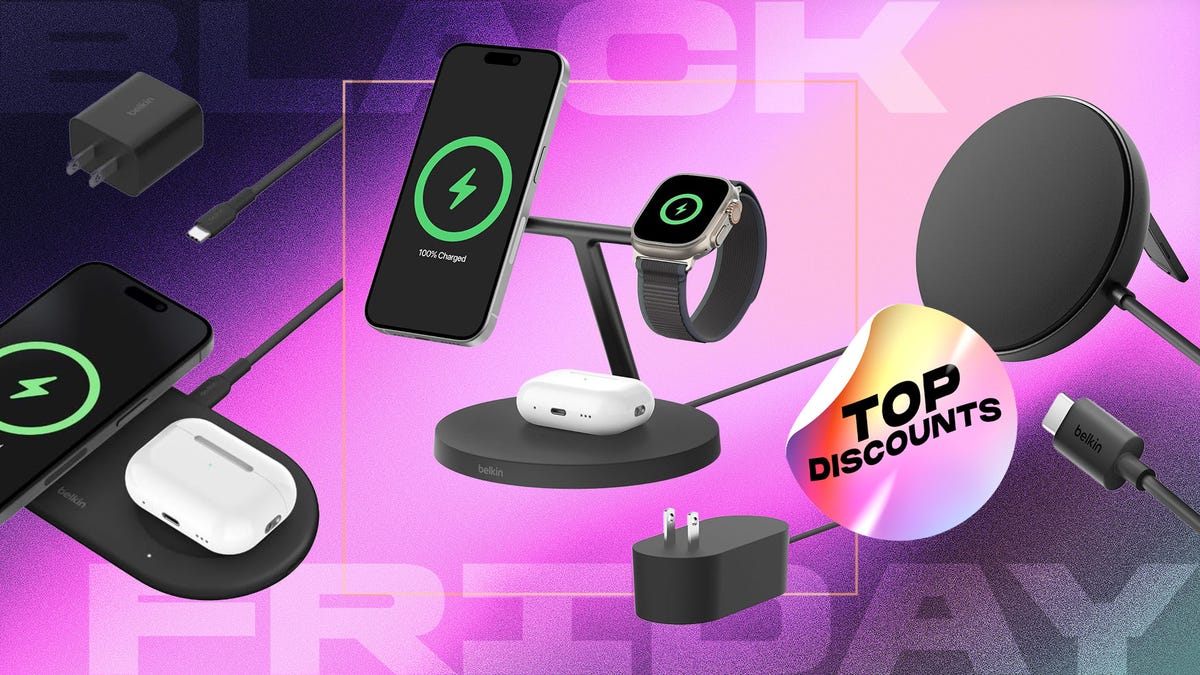
You can never have too many charging options, especially when you can stock up during an epic sale. We’re just hours away from Black Friday, and Belkin is offering up to 65% off its mobile accessories at Amazon. Belkin regularly shows up in our best lists, including our roundup of top wireless chargers.
The brand makes excellent gear at reasonable prices, and those prices just got even lower. Whether you’re looking for a charging station for your nightstand or a sleek power bank for travel days, there’s a Belkin Black Friday deal for you.
The Belkin MagSafe three-in-one wireless charging stand landed on our list of best wireless chargers for its impressive fast-charging performance. Our expert, David Carnoy, praised the stand’s convenient design and its ability to fast charge Apple’s entire ecosystem. That means you’ll be able to charge your iPhone, Apple Watch and any AirPods with a wireless charging case — all at once. Carnoy’s only complaint was the price; however, it’s substantially discounted for Black Friday. Belkin’s MagSafe three-in-one wireless charging stand is now just $78 — 35% off the usual $120 price.
If you spend a lot of time in your car, be it a long commute or regular road trips, a good car mount is a must. The Belkin MagSafe car mount is another one of our favorite accessories. The magnets provide a strong, secure hold for your phone, and you can rotate it for easy access. The mount plus charger is currently available for $55, down from $80.
Speaking of road trips, if you’re traveling this holiday season, you definitely need a portable power bank. Belkin has a 10,000 mAh power bank with a built-in USB-C power delivery cable for $15. This 20-watt charger typically retails for $40, so you’re saving 63%. There are four colors, but this price only applies to the black model. Other colors are available for $30.
If you’ve got a Nintendo Switch 2 or you’re gifting it to a loved one, you’ll love Belkin’s Switch 2 travel case. It’s lightweight with a hard shell and has storage pockets for up to 12 game cards. Snag one right now for $22. Just make sure you click the on-page coupon to get the full discount.
Belkin also has huge discounts on headphones and earbuds if those are on your gift list this year.
Why this deal matters
Phone accessories, including chargers and earbuds, can wear quickly and are easy to lose. Third-party retailers like Belkin offer a solid selection of mobile accessories for all budgets. This Black Friday deal makes now an excellent time to shop with up to 63% off top-rated charging stations, car mounts and even headphones.
Join Our Daily Deals Text Group!
Get hand-picked deals from CNET shopping experts straight to your phone.
By signing up, you confirm you are 16+ and agree to receive recurring marketing messages at the phone number provided. Consent is not a condition of purchase. Reply STOP to unsubscribe. Msg & data rates may apply. View our Privacy Policy and Terms of Use.
Technologies
The Black Friday Gaming Deals You Want Are Already Here, Including PlayStation, Xbox and Alienware
-

 Technologies3 года ago
Technologies3 года agoTech Companies Need to Be Held Accountable for Security, Experts Say
-

 Technologies3 года ago
Technologies3 года agoBest Handheld Game Console in 2023
-

 Technologies3 года ago
Technologies3 года agoTighten Up Your VR Game With the Best Head Straps for Quest 2
-

 Technologies4 года ago
Technologies4 года agoBlack Friday 2021: The best deals on TVs, headphones, kitchenware, and more
-

 Technologies4 года ago
Technologies4 года agoVerum, Wickr and Threema: next generation secured messengers
-

 Technologies4 года ago
Technologies4 года agoGoogle to require vaccinations as Silicon Valley rethinks return-to-office policies
-

 Technologies4 года ago
Technologies4 года agoOlivia Harlan Dekker for Verum Messenger
-

 Technologies4 года ago
Technologies4 года agoiPhone 13 event: How to watch Apple’s big announcement tomorrow

